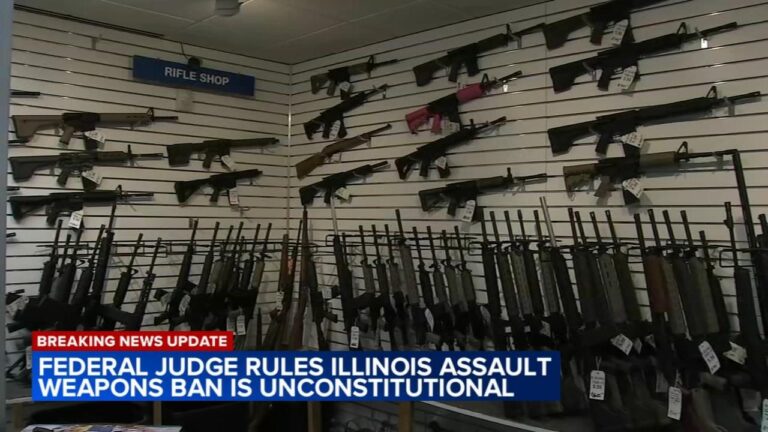Table of Contents
- Chicago Ends Prohibition on Stun Guns and Tasers Expanding Self Defense Options
- Legal and Public Safety Implications of the Repeal in Chicago
- Guidance for Residents on Purchasing and Using Stun Guns and Tasers Legally
- Recommendations for Law Enforcement Training and Community Awareness Programs
- Insights and Conclusions
Chicago Ends Prohibition on Stun Guns and Tasers Expanding Self Defense Options
In a significant legislative shift, Chicago has officially lifted the longstanding prohibition on stun guns and tasers, marking a new chapter in the city’s approach to personal safety. This policy change empowers residents by legally allowing the use and possession of these non-lethal self-defense tools, which were previously unavailable due to strict municipal restrictions. Lawmakers emphasize that this update aligns Chicago’s regulations with those of many other major cities, while maintaining public safety protocols designed to ensure responsible use.
Residents can now consider adding stun guns and tasers to their personal safety arsenal, with key benefits including:
- Enhanced personal protection: Providing non-lethal options to deter potential attackers.
- Legal clarity: Eliminating previous ambiguities around ownership and possession laws.
- Deterrence without fatalities: Offering alternatives that reduce reliance on firearms for self-defense.
This move has sparked conversations among community groups, law enforcement, and legal experts as they work together to educate Chicagoans on safe handling and legal responsibilities associated with stun gun and taser use.
Legal and Public Safety Implications of the Repeal in Chicago
The repeal of the ban on stun guns and tasers in Chicago introduces significant legal considerations for both law enforcement and residents. Individuals are now permitted to purchase and carry these devices, but must adhere to existing state regulations governing their use and possession. The change prompts questions regarding the enforcement of misuse, particularly concerning unlicensed use or deployment in ways that endanger public safety. Legal experts anticipate an increase in the number of cases involving self-defense claims, necessitating clear guidelines to differentiate lawful protection from potential assault charges.
From a public safety perspective, the decision is also met with cautious optimism among police departments and advocacy groups. Supporters argue that allowing civilians access to non-lethal deterrents like stun guns can reduce instances of violent crime by providing alternative defense tools. However, challenges remain, including:
- Training requirements: Ensuring users operate devices responsibly and understand the risks involved.
- Potential escalation: Addressing concerns that weapons could exacerbate conflicts instead of preventing violence.
- Law enforcement protocols: Adjusting response tactics to account for the increased civilian possession of electronic control devices.
Guidance for Residents on Purchasing and Using Stun Guns and Tasers Legally
With the recent legislative changes, residents can now legally purchase and carry stun guns and tasers within Chicago city limits. However, it is crucial to understand the specific requirements to remain compliant with local and state laws. Buyers must be at least 18 years old and are advised to purchase devices from licensed dealers to ensure product legitimacy and adherence to safety standards. Additionally, residents should familiarize themselves with the permissible circumstances for use, as misuse can lead to severe legal consequences.
For lawful ownership and use, keep the following points in mind:
- Do not carry stun guns or tasers into restricted areas such as schools, government buildings, and public transportation hubs.
- Use these devices strictly for self-defense purposes; unlawful deployment can result in criminal charges.
- Always carry proof of purchase and identification when transporting the device to avoid misunderstandings with law enforcement.
- Store the stun gun or taser safely and out of reach of minors to prevent accidental injury.
Recommendations for Law Enforcement Training and Community Awareness Programs
To ensure effective implementation of the recent legislative changes, law enforcement agencies must prioritize comprehensive training that highlights the responsible use of stun guns and tasers. This training should focus on de-escalation techniques, proper device handling, and understanding the medical implications of their use. Emphasizing scenario-based exercises will prepare officers to make informed decisions in high-pressure situations, minimizing unnecessary harm while maximizing public safety.
Parallel to law enforcement instruction, community awareness programs should be launched to educate residents on the legislation shift and promote open dialogue about non-lethal defense technologies. These initiatives can incorporate:
- Informational workshops targeting neighborhoods with historically high crime rates.
- Collaboration with community leaders to foster trust and transparency.
- Accessible digital resources detailing safe use and legal considerations of stun technology.
Insights and Conclusions
The repeal of Chicago’s ban on stun guns and Tasers marks a significant shift in the city’s approach to non-lethal self-defense options. As residents and law enforcement agencies adjust to the new regulations, ongoing discussions about public safety and responsible use are expected to continue. Stakeholders will be closely watching the impact of the policy change in the coming months to assess its effectiveness and implications for crime prevention in Chicago.Check Our Other Blogs
- StunGun – Your Trusted Source for Stun Guns, Laws, and Self-Defense Tips
- PepperSprayLaws – Your Trusted Resource for Pepper Spray Information
- StunGunLaws – Your Trusted Guide to Stun Gun Legality and Safety





